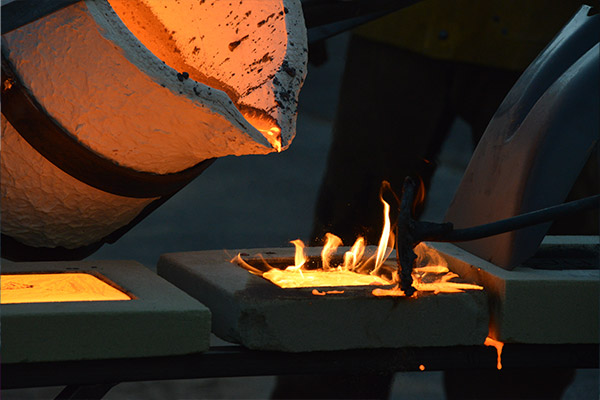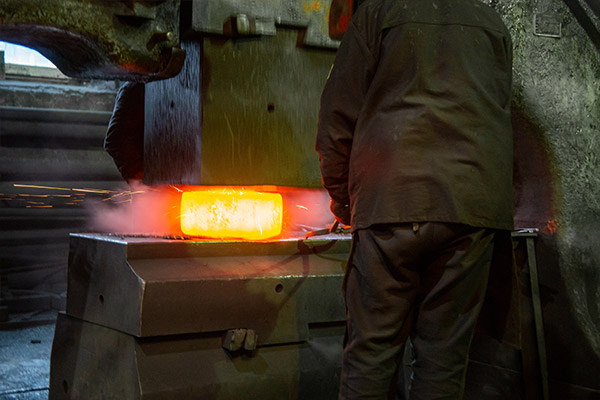Welcome to My Blog! 🌟
Before we dive into the content, I’d love for you to join me on my social media platforms. It’s where I share more insights, engage with our vibrant community, and post regular updates. Here’s how you can stay connected:
📘 Facebook: Connect with me on Facebook
Now, let’s embark on this journey together. I hope you find the content here insightful, engaging, and most importantly, valuable. Let’s explore, learn, and grow together! 🚀
Table of Contents
Introduction

In the world of high-performance manufacturing and tooling, materials matter. One such critical material is h13 tool steel, known for its exceptional thermal stability, toughness, and wear resistance. Whether you’re working in die casting, extrusion, or hot forging, this steel grade plays a pivotal role. But what happens when h13 tool steel is not part of the equation? This article explores six of the worst-case scenarios that could occur without this vital material, highlighting why it’s so crucial to modern industry. We’ll also provide a deeper understanding of its properties, uses, and alternatives.
What is H13 Tool Steel?
Before diving into the risks of not using h13 tool steel, it’s essential to understand what makes this alloy unique. H13 is a chromium-molybdenum hot work steel designed to endure extreme conditions. It offers a remarkable balance of hardness, toughness, and resistance to thermal fatigue, making it a top choice for tooling and dies subjected to high temperatures and pressures.
Common applications include:
- Hot forging dies
- Die casting molds
- Extrusion tooling
- Plastic mold bases
- Shear blades and punches
Its versatility and performance make it indispensable in many industrial operations.
Scenario 1: Premature Tool Failure in Hot Forging
Without h13 tool steel, manufacturers often turn to lower-grade materials for hot forging dies. These substitutes generally lack the heat resistance and mechanical strength needed for long-term durability. The result is premature tool failure.
Consequences:
- Frequent breakdowns and increased downtime due to tool replacements
- Escalated maintenance and operational expenses
- Variability in final product dimensions and surface finish
H13 tool steel’s heat resistance significantly reduces wear and extends tool life, making it ideal for hot forging applications.
Scenario 2: Cracking in Die Casting Molds
Die casting is a high-pressure, high-temperature process Die casting is a manufacturing process characterized by extremely high pressures and elevated temperatures. Because the molds endure constant thermal cycling and mechanical stress, their structural integrity is absolutely critical to ensuring smooth, uninterrupted production. When inferior materials replace the recommended high-performance alloy, serious issues such as thermal cracking become common.
This cracking typically occurs because lower-grade steels lack sufficient thermal conductivity, which impairs their ability to evenly dissipate heat. Additionally, these materials often have poor resistance to thermal shock—the rapid temperature changes that happen during each casting cycle. As a result, internal stresses build up within the mold, eventually leading to microscopic cracks that grow over time.
The repercussions of these defects are significant:
- Frequent Mold Repairs: Cracked molds require constant maintenance, increasing downtime and labor costs.
- Reduced Product Quality: Even minor cracks can cause defects in the cast components, such as surface imperfections or dimensional inaccuracies.
- Slower Production Cycles: Production must often pause to repair or replace damaged molds, reducing overall efficiency and throughput.
By using a specialized hot work steel engineered for these harsh environments, manufacturers can drastically reduce the risk of thermal fatigue. This steel’s excellent thermal conductivity and superior resistance to shock help maintain mold integrity through countless casting cycles, thereby extending the lifespan of the tooling and ensuring consistent, high-quality output.
Scenario 3: Deformation During High-Pressure Extrusion

Extrusion processes impose immense mechanical forces on tooling components, combined with repeated heating and cooling cycles. This environment demands materials that can retain their shape and mechanical properties under extreme stress and temperature variations. Using less suitable metals instead of the recommended hot work alloy often results in deformation of the extrusion dies.
When tooling materials cannot withstand the pressure and thermal cycling, they tend to warp or bend slightly over time. This deformation causes a cascade of problems in the manufacturing process:
- Inconsistent Extrusion Profiles: Warped dies produce parts that deviate from specified shapes, leading to out-of-tolerance products.
- Compromised Product Integrity: Structural weaknesses can form in extruded materials due to uneven flow or altered cross-sections.
- Increased Reject Rates: Defective products must be scrapped or reworked, wasting raw materials and increasing operational costs.
The superior mechanical strength and heat resistance of the appropriate tool steel prevent these issues by maintaining dimensional stability even under high loads and repeated thermal exposure. This reliability ensures precision in extrusion tasks, allowing manufacturers to maintain tight tolerances and achieve optimal throughput.
Comparison Table: H13 Tool Steel vs. Alternatives
| Property | H13 Tool Steel | Low Alloy Steel | Mild Steel | D2 Tool Steel |
|---|---|---|---|---|
| Max Working Temp (°C) | 600–650 | 300–400 | 250 | 500 |
| Wear Resistance | Excellent | Poor | Poor | Good |
| Thermal Conductivity | High | Medium | Low | Low |
| Toughness | High | Low | Medium | Medium |
| Shock Resistance | Excellent | Low | Low | Medium |
| Cost | Moderate | Low | Very Low | High |
This table clearly illustrates why h13 tool steel is the superior choice for high-stress, high-temperature tooling applications.
Scenario 4: Increased Downtime in Plastic Injection Molding
Even in plastic injection molding, the absence of h13 tool steel can lead to significant issues. Mold bases made from inferior materials wear out quickly, especially under repetitive cycles.
Negative impacts include:
- Frequent tool changeovers
- Delayed production schedules
- Increased labor costs
H13 tool steel provides excellent thermal and mechanical stability, which keeps production lines running efficiently.
Scenario 5: Edge Wear in Shear Blades and Punches
Blades and punches require sharp, resilient edges to cut Cutting tools like shear blades and punches demand exceptionally sharp and durable edges to efficiently slice through tough, abrasive materials. When these components are manufactured from suboptimal metals instead of the recommended high-performance alloy, the cutting edges deteriorate much faster than expected.
This rapid wear leads to several operational challenges:
- Dull Cutting Surfaces: Blunt edges reduce cutting precision, forcing more forceful operations that can damage the material or the machine.
- Inaccurate Dimensions: As blades lose their sharpness, the final products may suffer from dimensional inaccuracies and rough edges, affecting assembly and function.
- Higher Material Waste: Frequent blade dulling increases the likelihood of scrap material, raising production costs.
Using a robust hot work steel designed for edge retention significantly enhances the lifespan of blades and punches. Its superior toughness and hardness maintain sharpness longer, minimizing the frequency of regrinding or replacement. This durability translates to increased productivity and cost savings in manufacturing environments.
Scenario 6: Limited Design Flexibility in Tool Making

Toolmakers depend heavily on the predictable behavior of materials during machining, shaping, and heat treatment processes. Materials that lack the consistent mechanical and thermal properties of premium hot work alloys often present serious challenges during fabrication.
When lower-grade metals are used, designers face several constraints:
- Restricted Geometries: Complex shapes or fine details become difficult or impossible to achieve without risking material failure.
- Higher Risk of Cracking: Inconsistent microstructures and weaker thermal fatigue resistance increase the likelihood of cracks forming during or after manufacturing.
- Less Efficient Heat Transfer: Poor thermal conductivity impairs heat treatment quality, resulting in uneven hardness and mechanical performance.
By selecting an advanced hot work steel, engineers gain greater confidence to create intricate and reliable tooling solutions. This material’s consistent response to machining and thermal cycles enables the production of highly detailed components that withstand demanding industrial conditions without compromising quality.
Conclusion
The absence of h13 tool steel in critical tooling applications can lead to a cascade of negative outcomes—from tool failure and production delays to increased operational costs. As shown in this article, its exceptional properties make it the go-to choice for demanding industrial tasks. Whether you’re forging metal, molding plastic, or cutting precision parts, h13 tool steel ensures performance, longevity, and cost-effectiveness. Investing in the right material is not just a technical decision—it’s a strategic one.
FAQ
What industries commonly use h13 tool steel?
Industries such as automotive, aerospace, plastic molding, and metal forging frequently rely on it for its durability and thermal resistance.
Can h13 tool steel be welded?
Yes, but preheating and post-weld heat treatment are required to avoid cracking and maintain tool integrity.
How is h13 tool steel heat treated?
It typically undergoes annealing, quenching, and tempering to achieve desired hardness and toughness levels.
Is h13 tool steel corrosion-resistant?
It offers moderate corrosion resistance but is not stainless. Protective coatings may be applied for better performance.

